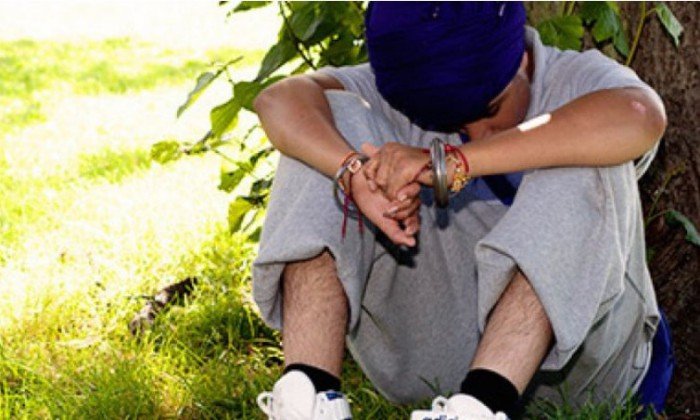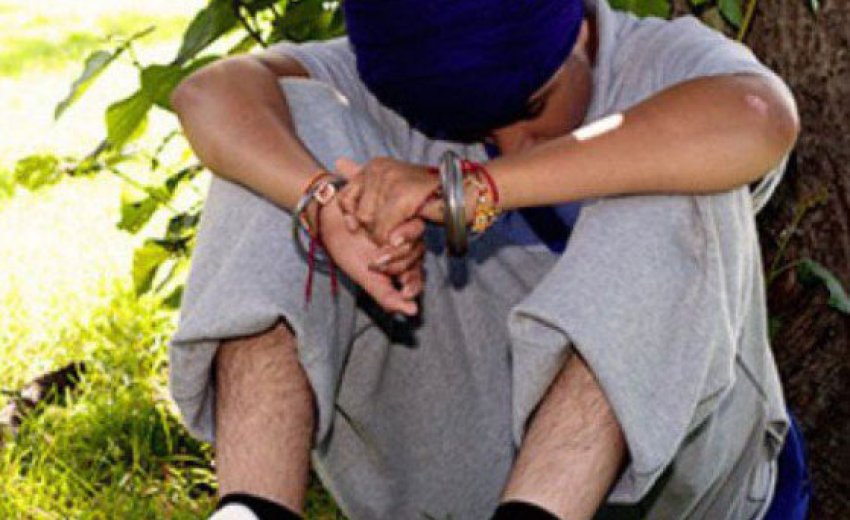 |
| Addiction Shatters Lives |
This bleak account is sadly, the case for many Sikh Punjabis who suffer from addiction or face the the affects of family members’ addiction. In Punjab, India 73.5% of the youth is addicted to drugs, and 40% of all men are addicted to drugs. Personally, very few of my Punjabi relatives are “clean.” The scenario in Punjab is worsening at such a rapid rate, that experts have already begun to put an expiry date on the state. Men Addicted to Drugs in PunjabIn Punjab, more men are affected by addiction than women, which means that women often times have burden of trying to take care of their husband’s, father’s, or son’s illness while dealing with its negative effects. “With men falling prey to drugs, women and children bear the brunt of living in a toxic atmosphere of crime and violence fueled by addiction,” reported The Hindu newspaper. Take for example, Mr. Singh, a drug addict in Punjab. “He lives at his parents’ home with his younger brother and his sister. He started using drugs at age 15, and then quit school. He worked for several years pulling a rickshaw, got married and had a daughter. Unable to abide her husband’s drug use, his wife left him and their daughter, Harpreet, 3. ‘He steals things from the house,’ said Seema Kaur, his sister. ‘Sometimes, he steals money.’ Mr. Singh, now 29, said he had tried many times to quit using drugs, but the urge is too strong. ‘My future is finished. I am basically dead now,’ he said.” Wives Coping with Husbands’ AddictionsIn 2010, Amanpreet Singh conducted a study in Punjab to understand how the wives of addicts respond to their husbands’ addiction. “The decade rise in substance abuse in society has put tremendous pressure on contemporary families, especially on wives of addicts. It generates conflicts in families with higher level of wife-victimization and forces them to adopt various coping mechanism,” he states. According to Amanpreet, the spousal abuse or “wife-victimization” includes increased domestic violence, increased risk of STD/HIV transmission, and aggravated physical and emotional distress. “Due to addiction,” he said, “drug users stop taking responsibilities and thus relationships suffer and resentment among family members increase.” For instance, Punjabi wives of addicts reported they felt like they had to take on 75% of their husband’s social, household, and economic duties once he became addicted. Here are what the wives are doing to combat their husbands’ addiction:
It is interesting to note that the more educated women, with fewer children seek police or family support where as women with less education will approach “saints” or invoke superstitious acts for help. Women Addicted to Drug in Punjab
Furthermore, “peer pressure and the fear of their parents dissuade them from going to de-addiction and treatment. The high cost of de-addiction also deters many,” reports HT Media. Women in Punjab fall into drugs because of three primary reasons.
Cause of Drug Addiction in PunjabSo why is it that so much of Punjab’s population is suffering from addiction? In the 1960s, the new agricultural policy dubbed, The Green Revolution, mechanized farming and brought in unprecedented amounts of wealth to Punjab. This lead to more idle time and more money, which were spent on drugs. The Green Revolution also brought with it unsustainable farming and financial practices which not only devastated the land, making it unproductive, but also put many farmers in debt. The associated financial strain and lack of work opportunity pushed many into using drugs as a temporary stress relief and coping mechanism, some farmers have resorted to suicide. Now, the Punjabi economy is slowing down and unemployment rate is high (48%). “While Punjab is one of the wealthiest parts of India, its high unemployment rate, slowing economy and proximity to Pakistan and Afghanistan makes its young men highly vulnerable to addiction to illegal narcotics, particularly opium, hashish and heroin. In the past two decades, Punjab has become a principal smuggling route for drugs from Afghanistan ultimately destined for Europe, but much of the product has found an eager market in India,” reports Palash Gosh. Other reasons that Punjabis fall to addiction that Amanpreet cited include:
Drugs in the Punjabi Diaspora
In the Punjabi diaspora, alcoholism, rather than hard drugs, is the most prevent type of drug addiction. In a study by Michael Angelo, he noted that a majority (63%) of Punjabi Sikh respondents he interviewed said they felt like they consumed too much alcohol both at home and in public. Drug Addiction in the USAIn Punjab, it is difficult to find a reputable rehabilitation center that uses scientifically backed recovery methods. “… Some private drug treatment centers are run by quacks,” reports the New York Times. Interestingly, the plight of an addict in the United States may not be that much better. Before 2011, there wasn’t a national organization based in science to help addicts or advocate for better treatment. There was no “American Heart Association” type movement for those suffering from addiction. This may have been due to the historically prevailing idea that addiction was not an actual diseases and thus did not warrant an association. A few decades ago, it was thought that addiction was a result of a lack of self control or will power. But now, as more research emerges, it turns out addiction is actually a disease. Drug Addiction is a DiseaseToday, majority of the biomedical community now considers addiction to be a brain disease: a condition caused by persistent changes in brain structure and function. Dr. Nora Volkow explains, “People say if you consider drug addiction a disease, you are taking the responsibility away from the drug addict. But that’s wrong. If we say a person has heart disease, are we eliminating their responsibility? No. We’re having them exercise. We want them to eat less, stop smoking. The fact that we have a disease recognizes that there are changes, in this case, in the brain.” As a disease, addiction, it is preventable and treatable. Here are the facts:
Organization to Help AddictsWhen you or someone you love is struggling with an addiction to alcohol or another drug, it can be hard to know where to turn. There are so many potential resources, and so many possible courses of action. Here are a few to get you started.
Why Help?
If we, as a society keep labeling addicts as “losers” and the “scum of the earth,” there is no way we can help them help themselves to a cleaner life. The above organizations may be an based in America, and may not have a direct impact on addicts in Punjab, but with the efforts they are making to reduce the stigma, research scientifically backed treatments, and develop compassion based care has the potential to travel the globe and help everyone with addiction. (If you know of any reputable de-addiction resources in Punjab, please share!) But, regardless of where people are suffering, I believe it is our duty, as Sikhs, to help them. As Guru Arjan Sahib wrote, “All that is seen is You, Lord, the expansion of the expanse. Says Nanak, the Guru has removed my doubts, I recognize God in all,” Sri Guru Granth Sahib Pana 51. You Can HelpSadly, it is too late for many families, but it is not too late for countless others. Together, we can conquer this devastating disease. Want to be part of the effort? Volunteer for one of the above organizations or donate now to one of my personal favorite organizations, Shatterproof! Even $1 helps. |

 November 3, 2014: A young
November 3, 2014: A young  Though statics reveal that more Punjabi men are suffering from addiction than Punjabi women, the numbers may be a bit skewed due to a lack of reporting. “Women are shy to visit general de-addiction centers due to fear of stigma; or they and their parents do not know where to go,”
Though statics reveal that more Punjabi men are suffering from addiction than Punjabi women, the numbers may be a bit skewed due to a lack of reporting. “Women are shy to visit general de-addiction centers due to fear of stigma; or they and their parents do not know where to go,” 
 Personally, I believe that the only way to treat addiction and heal society is by embracing families and addicts with love and compassion. By discussing it openly and rallying around the challenged individual.
Personally, I believe that the only way to treat addiction and heal society is by embracing families and addicts with love and compassion. By discussing it openly and rallying around the challenged individual.